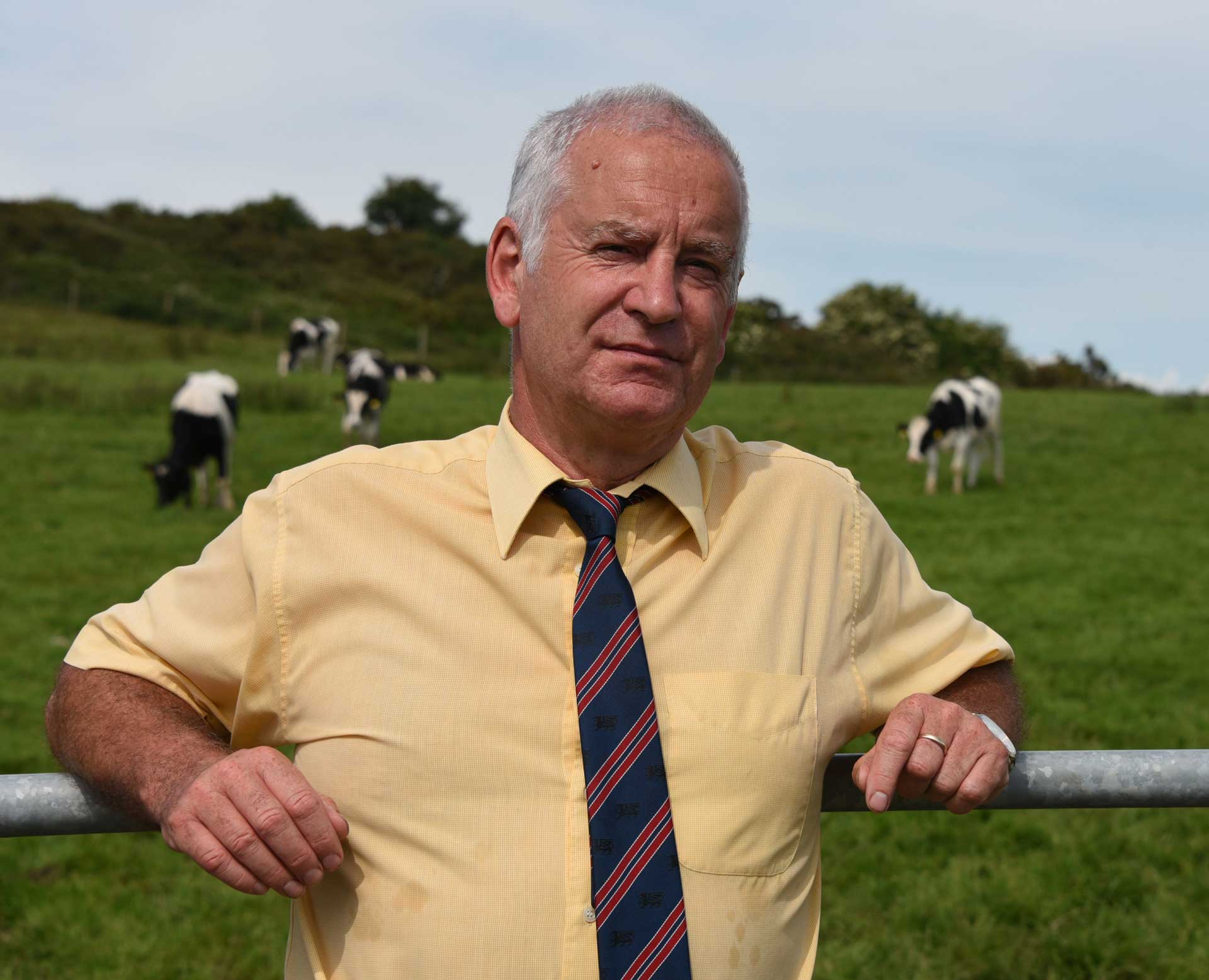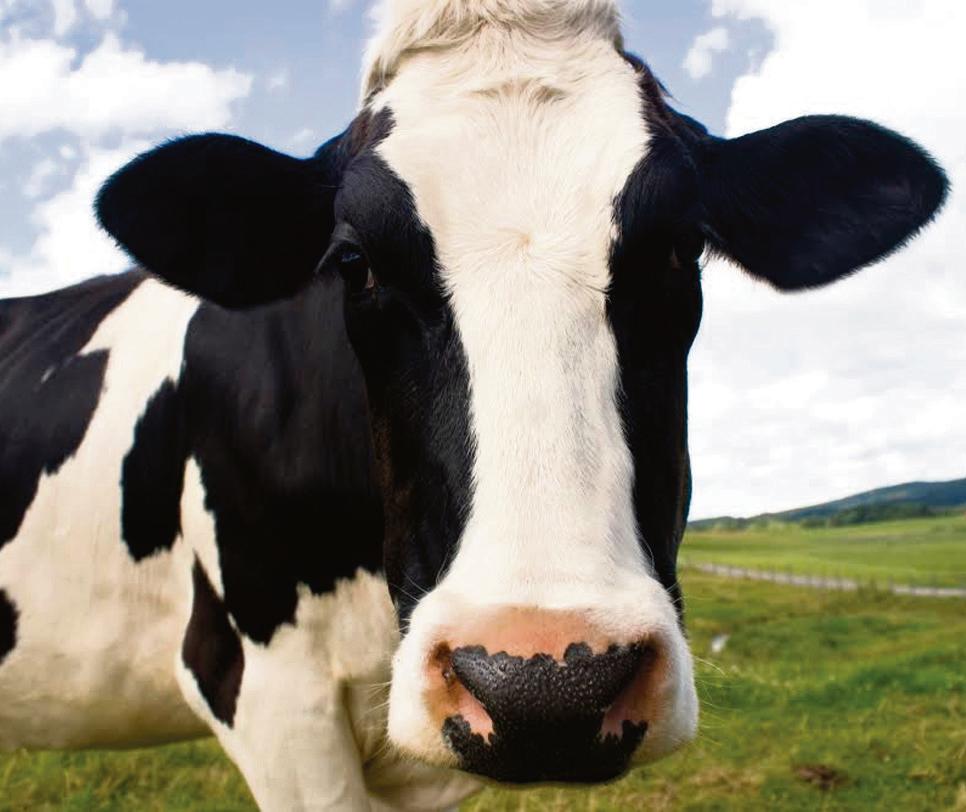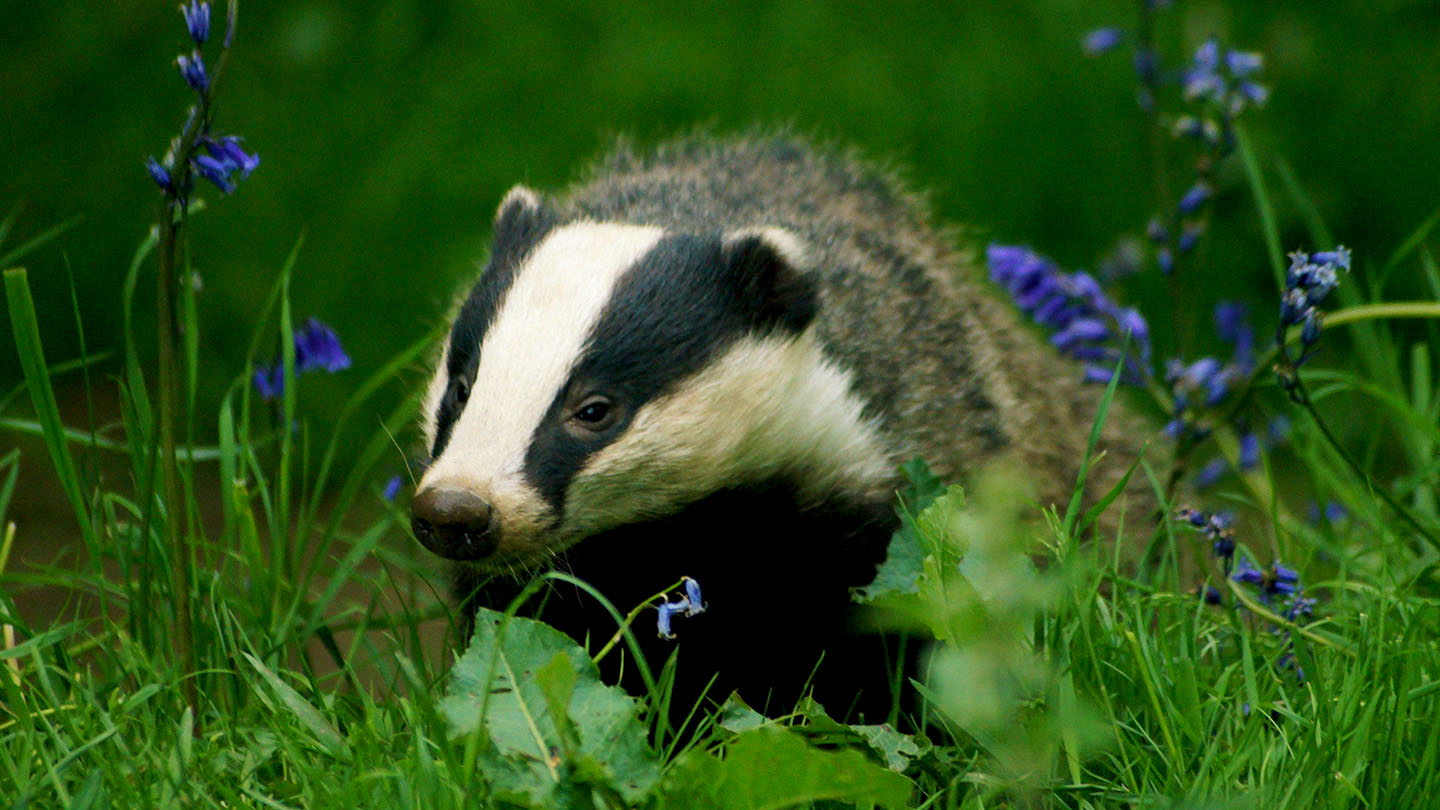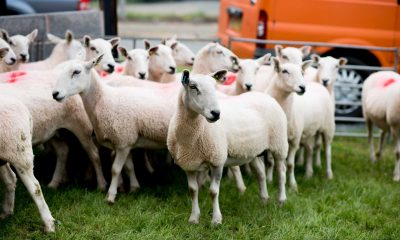Farming
FUW explores innovation at Royal Welsh

AMERICAN entrepreneur Steve Jobs, Co-founder of Apple, once said that ’innovation distinguishes between a leader and a follower’. Recognising the importance of innovation in the agricultural industry, the Farmers’ Union of Wales is hosting a special seminar at the Royal Welsh Show.
The innovation seminar, which is held on Tuesday, July 23, at 2pm at the FUW Pavilion, will focus on how farmers can embrace innovation in many different ways, and stay ahead of their competitors as Brexit looms.
Those attending the seminar can look forward to hearing from Geraint Hughes, of Madryn Foods, who leads on Business and Innovation in the Farming Connect’s Agri-Academy scheme, whose forum include Welsh farmers looking at technologies such as Genomics, Smart farming, Virtual reality, Social Media and Vertical farming.
He also operates as a broker for the European Innovation Partnership programme that aims to bridge academia and industry by conducting field trials of cutting edge technologies in a commercial environment.
Previously, Mr Hughes conducted agriculture research at Bangor University and was awarded a Nuffield Scholarship to study “Crops for functional foods” in 2006.
“I look forward to sharing knowledge I have gained from travels seeing innovation at work, which has now become reality, such as retail vending, the “farmacy” concept in supermarkets such as Planet Organics where shoppers buy with their health being the main consideration, pasture fed meat, robotics, genomics and more,” said Geraint Hughes.
Also joining the panel of speakers is Karina Marsden who is a post-doctoral researcher in the Ecosystems and Environment group at the Environment Centre Wales, Bangor University.
She has researched soil nitrogen cycling in livestock production systems, with a particular focus on emissions of the greenhouse gas, nitrous oxide, from agricultural soils. Karina works alongside Professor Dave Chadwick who specialises in sustainable land use systems and Professor Davey Jones who specialises in soil and environmental science.
Bangor University researchers have been investigating novel methods of utilising nitrification inhibitors to reduce diffuse nitrogen pollution from agriculture, including nitrate leaching and emissions of the greenhouse gas nitrous oxide.
Novel strategies include targeting the use of these inhibitors to critical pollution source areas and quantifying how effective they are in terms of cost of application and alleviation of nitrogen pollution. Compounds of biological, rather than chemical origin are also being investigated. There is potential to adopt these technologies, possibly under the support of agri-environment schemes, but research is key to determine how effective they are and how their use can be optimised before wider adoption can take place.
Another novel technology being studied is the use of real-time in-situ sensors which can detect soil nitrate. The major aim is to better improve nitrogen use efficiency, to match the supply of nitrogen fertilisers to the demand of the crops.
The research will assess how these sensors perform in comparison to existing technologies,such as crop canopy sensors measuring greenness. The technology has been advancing with improvements to sensor robustness and design.
Research is continuing into how this technology could be adopted on farms e.g. how many sensors would be required across a given area and how to link the soil nitrate concentration data to crop growth and nitrogen demand.
FUW Policy officer Bernard Griffiths said: “The FUW has collaborated with other industry Welsh stakeholders for the past 18 months to tackle diffuse and point source pollution from agriculture sources and innovation was identified as one of the 5 key prongs to bring about improvement.
“We therefore welcome innovative research that will develop alternative strategies to keep Welsh farmers working on the land and we look forward hearing more about this from Karina at the seminar.“
Updating attendees on the latest developments on a range of sensors to help farmers remotely monitor livestock in extensive systems, is Shiv Kodam of Hoofprints Technologies – who have carried out a year-long trial in collaboration with Scottish Rural Colleges at their remote hill farm in Crianlarich, Scotland.
The company has also developed gate sensors to monitor the opening and closing of gates on farms. The gate sensors could play an important role in notifying the farmer if a farm gate has been opened by someone other than the farmer.
“Currently, Hoofprints Technologies are working on several farms across the UK on a range of different systems for different uses. For example, cows and sheep are collared which log and transmit the location of the animal every few minutes. This can then be displayed on a dashboard in real time.
“Other technology developed will accurately and automatically “mother-up” ewes and lambs within 48 hours with up to 99% accuracy of the ewe and lamb relationship. This also works with ewes with multiple lambs. The technique can be used on suckler cows to identify cross suckling traits.
“The technology allows the accurate identification of the behaviours of remote livestock so that farmers could be notified if their animals behave differently from the norm, or if the animal displays signs of illness, characterised by lack of movement or motion. I’m looking forward to provide further updates on this at the FUW’s seminar and look forward to seeing many of you there,” said Shiv Kodam.
FUW Policy Officer Bernard Griffiths said: “We are very excited about this seminar, which will explore a variety of innovations made, that can help the sector progress in future. The seminar is free to attend and open to all – I hope many of you can join us in exploring further aspects of innovation in agric sector.”
Farming
Welsh Conservatives warn climate plans could mean fewer livestock on Welsh farms

THE WELSH CONSERVATIVES have challenged the Welsh Government over climate change policies they say could lead to reductions in livestock numbers across Wales, raising concerns about the future of Welsh farming.
The row follows the Welsh Government’s decision, alongside Plaid Cymru and the Welsh Liberal Democrats, to support the UK Climate Change Committee’s Fourth Carbon Budget, which sets out the pathway towards Net Zero greenhouse gas emissions by 2050.
The Carbon Budget, produced by the independent Climate Change Committee (CCC), states that meeting Net Zero targets will require a reduction in agricultural emissions, including changes to land use and, in some scenarios, a reduction in livestock numbers.
During questioning in the Senedd, the Welsh Conservatives pressed the Deputy First Minister and Cabinet Secretary for Climate Change and Rural Affairs on whether the Welsh Government supports reducing livestock numbers as part of its climate strategy.
Speaking after the exchange, Welsh Conservative Shadow Cabinet Secretary for Rural Affairs, Samuel Kurtz MS, said the Welsh Government could not distance itself from the implications of the policy it had backed.
Mr Kurtz said: “By voting in favour of these climate change regulations, Labour, Plaid Cymru and the Liberal Democrats have signed up to the UK Climate Change Committee’s call to cut livestock numbers in Wales, and they cannot dodge that reality.
“The Deputy First Minister’s smoke-and-mirrors answers only confirm what farmers already fear: that Labour, along with their budget bedfellows in Plaid and the Lib Dems, are prepared to sacrifice Welsh agriculture in pursuit of climate targets.”
He added that the issue came at a time of growing pressure on the farming sector, pointing to uncertainty over the proposed Sustainable Farming Scheme, the ongoing failure to eradicate bovine TB, nitrogen pollution regulations under the Nitrate Vulnerable Zones (NVZs), and proposed changes to inheritance tax rules affecting family farms.
The Welsh Government has repeatedly said it does not have a target to forcibly reduce livestock numbers and has argued that future emissions reductions will come through a combination of improved farming practices, environmental land management, and changes in land use agreed with farmers.
Ministers have also said the Sustainable Farming Scheme, which is due to replace the Basic Payment Scheme, is intended to reward farmers for food production alongside environmental outcomes, rather than remove land from agriculture.
The UK Climate Change Committee, which advises governments across the UK, has stressed that its pathways are based on modelling rather than fixed quotas, and that devolved governments have flexibility in how targets are met.
However, farming unions and rural groups in Wales have warned that policies focused on emissions reduction risk undermining the viability of livestock farming, particularly in upland and marginal areas where alternatives to grazing are limited.
The debate highlights the growing tension between climate targets and food production in Wales, with livestock farming remaining a central part of the rural economy and Welsh cultural identity.
As discussions continue over the final shape of the Sustainable Farming Scheme and Wales’ long-term climate plans, pressure is mounting on the Welsh Government to reassure farmers that climate policy will not come at the expense of the sector’s survival.
Farming
FUW Insurance Services appoints Paul Jameson as non-executive director

Experienced insurance and risk specialist joins board as long-serving director retires
FUW INSURANCE SERVICS LTD, Wales’ leading specialist agricultural insurance broker, has announced the appointment of Dr Paul Jameson as a non-executive director.
Dr Jameson brings extensive experience in insurance and risk management, having worked as an actuary and senior executive within subsidiaries of major global insurers including Allianz, Munich Re, Legal & General and Wakam. He has held chief risk officer roles since 2020.
During his career, Dr Jameson has led multidisciplinary teams spanning actuarial services, risk management, compliance, audit, legal and marketing approvals, giving him broad experience in both strategic oversight and operational governance.
Speaking following his appointment, Dr Jameson, who lives in Colwyn Bay, North Wales, said he was looking forward to supporting the farming sector in Wales.
He said: “I am delighted to join FUW Insurance Services and would like to thank Ann, Guto and the rest of the team for their warm welcome.
“I have been impressed by the passion and commitment of the board to the farming community, and by its ambition to grow and diversify the insurance business. I am keen to support the farming profession and help ensure the continued success of the sector in Wales, particularly during periods of economic and geopolitical uncertainty.
“I hope my experience in the insurance sector will help the business build on its successes and continue to grow, especially as it explores new commercial opportunities and innovative avenues for expansion.”
Ann Beynon OBE, chair of the FUW Insurance Services board, said Dr Jameson’s expertise would be a significant asset to the organisation.
She said: “We are delighted to welcome Dr Paul Jameson to the board. His depth of experience in insurance and his understanding of risk management will be invaluable as we continue to develop and diversify our services.
“Paul’s insight and strategic perspective will help us navigate a changing insurance market, identify new opportunities for innovation and growth, and strengthen the services we provide to our customers.”
Dr Jameson’s appointment follows the retirement of Ken Isherwood, who has stepped down from the board after more than a decade of service.
Paying tribute, Ann Beynon said: “Ken’s integrity, wisdom and deep knowledge of the insurance industry have underpinned much of our success.
“It has been a privilege to work alongside him, and we wish him every happiness in his well-earned retirement.”
Community
Badger Trust launches manifesto ahead of 2026 Senedd elections

THE BADGER TRUST has published a new Cymru Badger Manifesto calling on candidates standing in the 2026 Senedd elections to commit to a science-led approach to bovine tuberculosis (bTB) and to maintain Wales’ current policy of not culling badgers.
The manifesto, released on Wednesday (Dec 10) as part of the charity’s Badgers Belong Here / Mae Moch Daear yn Perthyn Yma campaign, sets out the organisation’s position on badger protection, wildlife crime and bTB control, and urges politicians to reject calls for the reintroduction of culling in Wales.
Badger Trust argues that political decisions taken during the next Senedd term will be critical to the future of badgers, which it describes as culturally and ecologically significant to Wales. The charity says badgers have been present in Wales for more than 250,000 years and remain part of Welsh folklore, place names and rural identity.
Five key commitments
The manifesto outlines five commitments the charity is asking Senedd candidates to support, including defending what it describes as science-led policy on bTB, challenging misinformation in public debate, strengthening enforcement against wildlife crime, recognising badgers as part of Welsh heritage, and supporting local volunteer badger groups.
According to Badger Trust, 140 incidents of badger-related wildlife crime have been recorded in Wales since 2020, which it says highlights the need for improved reporting and enforcement.
The charity also points to the work of six active badger groups across Wales, which it says assist with rescuing injured animals, monitoring setts, recording road casualties and supporting local authorities.
bTB policy in Wales and England
Wales has not carried out widespread badger culling as part of its bTB control strategy, instead focusing on cattle testing, biosecurity measures and herd management.
Badger Trust claims that new herd incidents of bTB in Wales fell by more than 40% between 2010 and 2024, which it attributes to cattle-based controls rather than wildlife intervention.
The charity contrasts this with England, where it says almost 250,000 badgers have been culled over the past decade as part of bTB control programmes. It argues that bTB rates in England remain higher than in Wales and that the evidence does not show culling alone to be responsible for reductions in disease.
Disputed claims over culling
The manifesto challenges the frequently cited claim that badger culling in England led to a 56% reduction in bTB in cattle. Badger Trust says this figure has been misinterpreted and that studies cited in support of culling also involved additional measures such as enhanced cattle testing and biosecurity.
The charity points to statements from researchers and official correspondence which, it says, indicate that reductions in bTB cannot be attributed solely to culling.
Supporters of culling, including some farming groups, continue to argue that wildlife control should remain an option as part of a wider disease management strategy, particularly in areas with persistent infection. The Welsh Government has previously said it keeps its bTB policy under review in line with emerging evidence.
Call to candidates
Nigel Palmer, CEO of Badger Trust, said Wales demonstrated that bTB could be tackled without killing wildlife.
He said: “Wales is a world-leading example of how to address bovine TB through evidence-based policy. The progress made here shows that culling is not necessary, and we urge Senedd candidates to stand by the science.”
The manifesto is available in both Welsh and English and will be circulated to political parties and candidates ahead of the 2026 election.
-

 Crime1 day ago
Crime1 day agoMilford Haven man jailed after drunken attack on partner and police officers
-

 News4 days ago
News4 days agoDyfed-Powys Police launch major investigation after triple fatal crash
-

 Crime1 day ago
Crime1 day agoTeenager charged following rape allegation at Saundersfoot nightclub
-

 Crime2 days ago
Crime2 days agoMan charged with months of coercive control and assaults
-

 Crime3 days ago
Crime3 days agoMan sent to Crown Court over historic indecent assault allegations
-

 Crime5 days ago
Crime5 days agoMan spared jail after baseball bat incident in Milford Haven
-

 Crime3 days ago
Crime3 days agoMilford Haven man admits multiple offences after A477 incident
-

 Crime2 days ago
Crime2 days agoWoman ‘terrified in own home’ after ex breaches court order


































